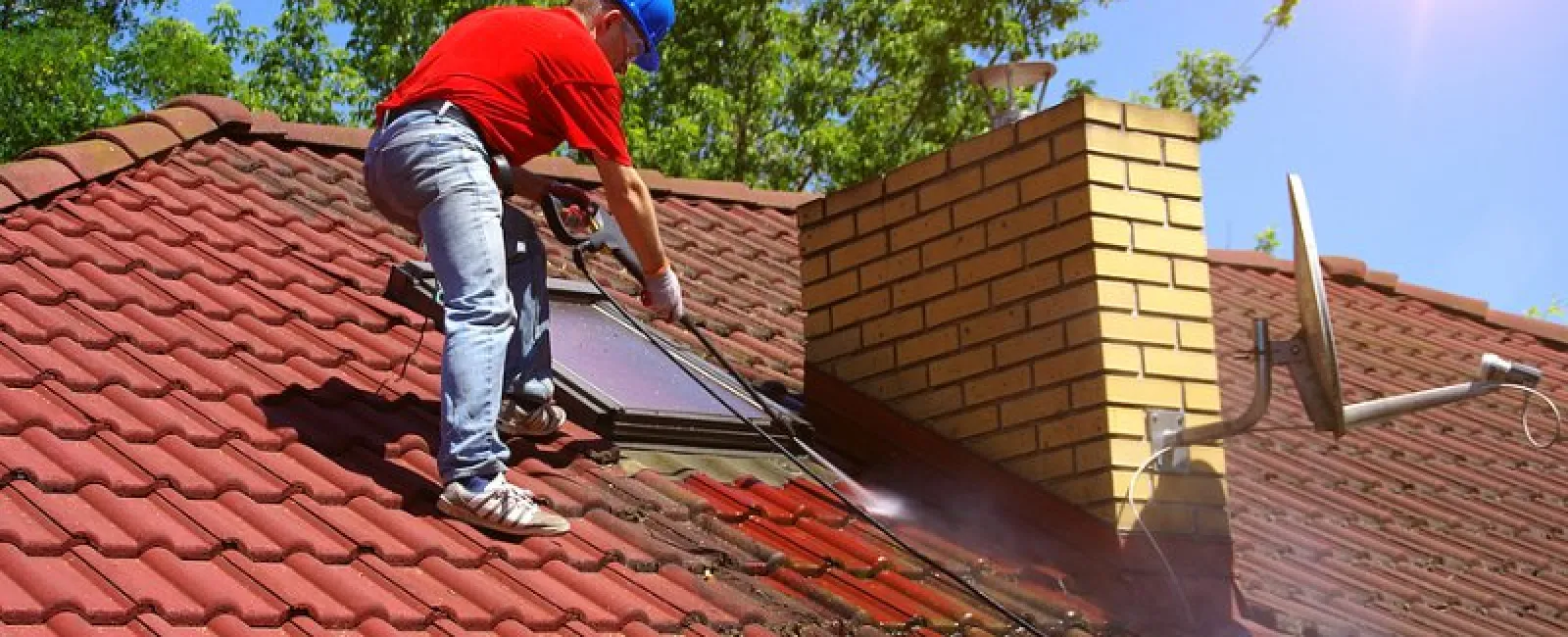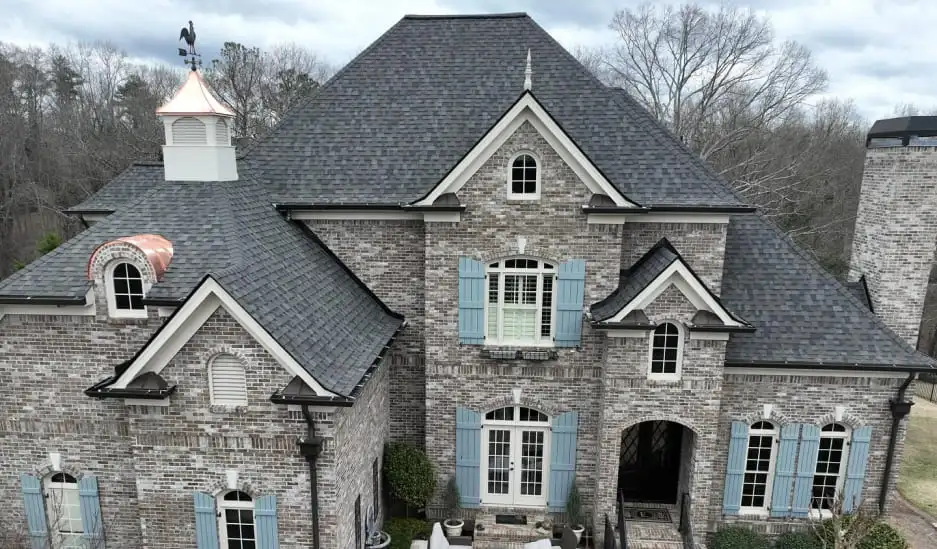While moss can cause some roofs to look more appealing, it can cause serious damage to a roof if you leave it untouched. While the initial phases of a moss infestation aren’t too noticeable, as it grows and becomes intertwined with your shingles it can become more difficult to remove. Moss can soak up the water around it and cause water damage to your shingles, which can then eventually make its way into your home. If you’re trying to figure out how to clean moss off a roof, here are some things you need to know and simple steps to follow.

Moss is a type of plant that looks like a furry green patch and tends to grow in humid locations with shade. There are many different types of moss, in fact, there are over 16,000 types distributed across the world. On roofs, moss tends to grow on asphalt shingles and wood shingles. Some species of moss will only grow on specific roof shingles like wood, and others will grow on different parts of the shingles. If your roof has a moss infestation, chances are there is more than one type of moss growing on it.
Steps On How To Remove Moss From Roof
Cleaning moss from a roof is a DIY project that you can do on your own, or you can always hire a roofer to do it for you if you’re not comfortable standing on your roof.
To remove moss from a roof, you should use a moss-killing product. There are two types of moss killing products out there: dry powder and liquid. For dry powder moss-killer, you just sprinkle it across your roof and wait until it rains so that it washes the product over your roof and kills the moss. For liquid moss-killer, you just attach a garden hose to it and then just spray it over your roof. Once the moss has been killed by the product, you still need to remove the dead moss by hand.
Here are the steps on how to remove moss from roofs using liquid moss-killer:
- Using a ladder, safely climb up to the area of your roof where the moss is located.
- Attach the garden hose to the liquid moss killer bottle and carefully rinse the roof and spray all the areas affected by it.
- The product will have specific instructions stating how long you should let it sit.
- Once the waiting period is over, you need to spray your roof with water this time. Avoid spraying the water at an upward angle and instead spray the roof from the side to avoid causing damage to your shingles. At this point, some of the moss will start to fall off it. Make sure to spray the roof enough so that the entire product eventually washes off.
- Any moss that is leftover at this point can be removed by hand. Start at the bottom and work your way up.
Here are the steps on how to remove moss from a roof with dry powder moss-killer:
- Using a ladder, safely climb up to the area of your roof where the moss is located.
- Once you’re in position, apply the dry powder on your roof around two to three feet apart and in parallel to the roof ridge.
- At this point, you just need to wait for the rain to come and mix with the powder so that it washes over your roof. Once that has been done, give it a couple of days and you will see that most of the moss has fallen or died at this point.
- Any moss that is leftover at this point can be removed by hand. Start at the bottom and work your way up.
How You Shouldn’t Remove Moss From Roofs
While there is a right way to remove moss from the roof, there are also wrong ways to go about it.
A common misconception about how to get moss off a roof is that people tend to consider is using a pressure washer. A pressure washer tends to put too much pressure on roofs, which can damage your shingles. Most people aren’t properly trained to use them, which might cause more harm than good.
Scraping is also not something you should consider when trying to figure out how to get rid of moss on the roof, as it can also cause damage to the shingles. Since moss can deeply attach itself to your shingles, you might end up lifting shingles too much and causing cracks in them.
How To Prevent Roof Moss
While cleaning moss off a roof isn’t the hardest thing to do, it can be quite an annoyance if you have to consistently do it. There are several steps you can take to prevent moss from growing on roofs in the first place.
Trimming trees or other large plants that cause shade on your roof is a good idea to help prevent moss since it likes to grow in the shade. Moss will often collect water from the leaves that fall on your roof, which is more motivation for trimming trees or potentially completely removing them.
Installing a metal strip on your roof ridge can also help prevent it. When it rains some of the molecules in the material will wash over your roof and help prevent the growth of not only moss but algae too.
The type of shingles you have on your roof also plays a role in preventing moss from growing. Certain shingles come with copper granules, which contain properties that can prevent moss and algae growth.
If you are currently experiencing roof moss issues and think this project is too risky to do it yourself, feel free to connect with our team!



